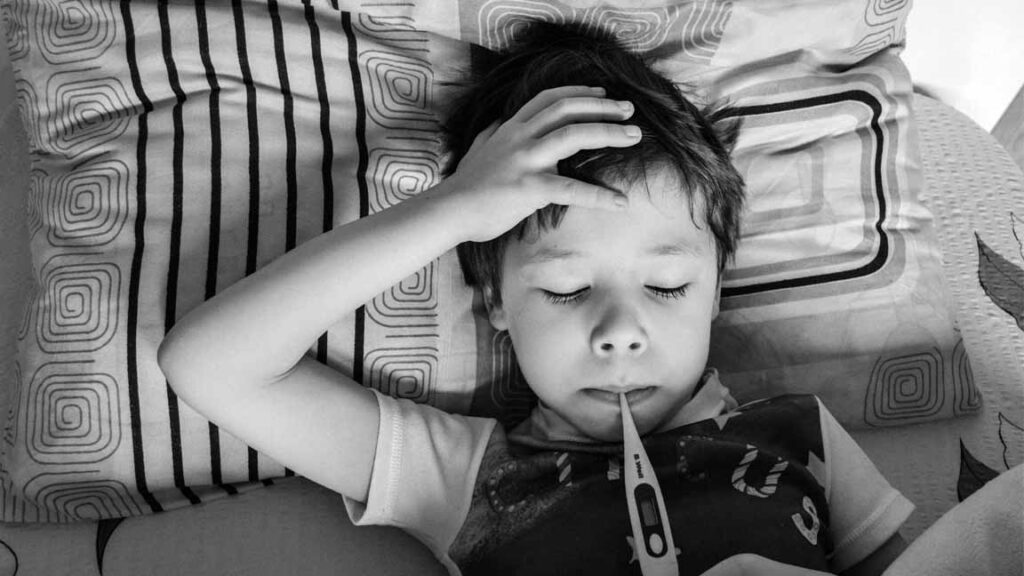Why Pneumonia Deserves Your Attention : When we hear the word “pneumonia,” most of us think of a severe cold or a seasonal infection.
But pneumonia is far more serious than that. It is an acute infection of the lungs where the tiny air sacs (alveoli) fill with pus and fluid, making it hard to breathe and deliver oxygen to the body.
Every year, hundreds of millions of people around the world are affected, and according to the World Health Organization (WHO), pneumonia remains one of the leading causes of death in children under 5 and a major risk for the elderly.
In 2025, despite modern medicine, pneumonia is still a major public health challenge.
The reason?
- Changing bacteria and viruses,
- Rising antibiotic resistance, and
- Low awareness about prevention and early treatment.
I will take you deep into everything you need to know about pneumonia:
its types, causes, symptoms, risk factors, complications, treatments, prevention, and FAQs – all explained in a simple way.
Types of Pneumonia
Doctors classify pneumonia in many ways. The “type” of pneumonia matters because it influences the treatment plan.
Here are the major types:
A. Community-Acquired Pneumonia (CAP)
This is the most common type, caught outside hospitals or healthcare settings.
Caused mostly by bacteria (e.g., Streptococcus pneumoniae) or viruses (like influenza), it usually starts after a cold or flu.
Symptoms may include:
- Sudden fever
- Chest pain
- Cough with phlegm
- Shortness of breath
B. Hospital-Acquired Pneumonia (HAP)
Patients admitted to a hospital for 48 hours or more sometimes develop this type.
It is often more dangerous because the bacteria found in hospitals tend to be more resistant to antibiotics.
This type is common in ICU patients, people recovering from surgery, or those with weak immune systems.
C. Ventilator-Associated Pneumonia (VAP)
When a patient is on a breathing machine (ventilator) in intensive care, there is a risk of infection in the lungs caused by contaminated equipment or hospital air.
D. “Walking” Pneumonia
A milder form of pneumonia, often caused by Mycoplasma pneumoniae.
Patients can still walk around and perform daily tasks, hence the name.
Symptoms resemble a persistent cold: dry cough, fatigue, mild fever, and sore throat.
E. Aspiration Pneumonia
This occurs when food, liquids, vomit, or saliva accidentally enter the lungs instead of the stomach.
People with swallowing difficulties or neurological issues are most at risk.
F. Fungal Pneumonia
Caused by fungi such as Histoplasma, Coccidioides, or Cryptococcus.
This type usually affects people with weakened immune systems, like cancer patients or those with HIV/AIDS.
Why understanding types matters:
Each type may need a different antibiotic, antifungal, or supportive care plan. Misdiagnosis can delay the right treatment.
Causes & Pathogens (What Triggers Pneumonia?)
Pneumonia develops when microorganisms infect the delicate air sacs (alveoli) in the lungs, causing them to fill with fluid or pus.
This infection makes it harder for oxygen to reach the bloodstream, leading to cough, fever, and breathing difficulties.
1. Bacteria (Most Common Cause)
- Streptococcus pneumoniae – The most frequent cause worldwide, responsible for community‑acquired pneumonia.
- Haemophilus influenzae – Often affects young children and older adults.
- Mycoplasma pneumoniae – Known for causing “walking pneumonia,” a milder but persistent form.
- Legionella pneumophila – Can trigger outbreaks called Legionnaires’ disease, often linked to contaminated water sources.
2. Viruses
- Influenza viruses (Flu)
- Respiratory syncytial virus (RSV)
- Coronaviruses (including COVID‑19)
- Adenoviruses
Viral pneumonia can be mild but becomes serious in young children, older adults, and those with weak immune systems.
Sometimes, viral infections weaken the lungs, allowing bacteria to invade later (secondary bacterial pneumonia).
3. Fungi
- Histoplasma – Found in soil contaminated by bird or bat droppings.
- Cryptococcus – Risk for immunocompromised individuals.
- Aspergillus – Can be life‑threatening for cancer or transplant patients.
4. Other Causes
- Aspiration – Food, liquid, saliva, or vomit accidentally entering the lungs instead of the stomach.
- Environmental exposure – Rarely, inhaling toxic fumes or chemicals can inflame lung tissue and lead to pneumonia.
Key takeaway:
Bacteria are the most common cause, but viruses and fungi can also be responsible.
Identifying the exact pathogen is critical because treatment differs for each type.
Who is at Risk?
While anyone can develop pneumonia, certain groups are much more vulnerable because their immune defenses are weaker or their lungs are already compromised.
A. Age-Related Risk
- Children under 5 years old
- Their immune systems are still developing.
- According to WHO, pneumonia is responsible for about 15–17% of all deaths in children under five worldwide.
- Premature babies and malnourished children are at the highest risk.
- Older adults (65+)
- As we age, lung function naturally declines.
- Health problems like diabetes, kidney disease, or heart disease make older adults more susceptible.
- Pneumonia can be particularly dangerous because it may quickly lead to hospitalization.
B. People with Weakened Immunity
- Cancer patients undergoing chemotherapy
- People living with HIV/AIDS
- Organ transplant recipients on immunosuppressive medication
- Patients taking long-term steroids or immune-suppressing drugs
For these groups, even mild respiratory infections can escalate into severe pneumonia.
C. Lifestyle and Environmental Risks
- Smoking – Damages the natural defenses of the lungs.
- Excessive alcohol use – Weakens the immune system.
- Indoor air pollution – Especially in households using wood, kerosene, or coal for cooking/heating.
- Exposure to toxic gases or industrial pollutants – Long-term exposure irritates lung tissues.
D. Chronic Diseases
- Asthma
- COPD (Chronic Obstructive Pulmonary Disease)
- Heart failure and other heart diseases
- Diabetes
These conditions make the body less able to fight off infections.
Key Takeaway:
Even a simple viral infection like the flu or a bad cold can turn into life-threatening pneumonia in these high-risk groups.
Early recognition and prompt treatment are critical.

Symptoms & Diagnosis of Pneumonia
One of the most challenging things about pneumonia is that its symptoms can look a lot like the flu, bronchitis, or even COVID-19.
However, there are some key warning signs and ways doctors confirm whether it’s pneumonia or something else.
Common Symptoms of Pneumonia
The classic signs include:
- High fever and chills – Fever can spike quickly.
- Persistent cough – Often producing phlegm (greenish, yellow, or rust-colored mucus).
- Chest pain – Sharp pain that worsens when you breathe deeply or cough.
- Shortness of breath – Difficulty catching your breath even during simple activities.
- Fatigue and weakness – Feeling exhausted all the time.
- Sweating and clammy skin – Especially during fever spikes.
Symptoms in Children and Infants
Pneumonia can be hard to recognize in babies and toddlers because they cannot explain what they feel. Look out for:
- Fast or labored breathing (you may see their chest pulling in between ribs).
- Bluish lips or fingertips – Sign of low oxygen.
- Refusal to feed or drink.
- Lethargy, unusual sleepiness, or irritability.
Symptoms in Older Adults
In the elderly, pneumonia can sometimes present without fever. Instead, they may show:
- Confusion or sudden changes in mental awareness
- Weakness and falls
- Loss of appetite
These subtle signs make it important to seek medical care quickly.
How Doctors Diagnose Pneumonia
A doctor doesn’t just rely on symptoms. Physical exams and tests confirm the diagnosis:
1. Listening to the Lungs
With a stethoscope, doctors listen for:
- Crackling, bubbling, or rumbling sounds – caused by fluid in the lungs.
2. Chest X-ray
- The most common test to see if there are fluid-filled patches in the lungs.
3. Blood Tests
- To check if the infection is caused by bacteria, virus, or something else.
- Sometimes, blood cultures are done to identify the exact microbe.
4. Sputum Tests
- A sample of mucus (phlegm) from your cough is analyzed in the lab.
5. Pulse Oximetry and Other Tests
- Pulse oximeter measures oxygen levels in your blood.
- If oxygen is low or you are very ill, additional tests like CT scan or bronchoscopy may be advised.
How Pneumonia Differs from a Common Cold or Flu
- Cold: Usually mild, mostly nose/throat symptoms, doesn’t cause chest X-ray changes.
- Flu: Can cause high fever and weakness but improves in about a week.
- Pneumonia: Lasts longer, causes breathing issues, visible lung changes on X-ray.
Why Early Diagnosis Matters
Early treatment can:
- Shorten illness duration
- Prevent hospitalization
- Reduce risks of serious complications like sepsis or respiratory failure
Delays, especially in young children, elderly adults, and people with chronic illnesses, can make pneumonia life-threatening.
Remember:
If you or someone you know has high fever, chest pain, or trouble breathing, don’t ignore it—see a healthcare professional immediately.

Complications and Prognosis of Pneumonia
While many people recover fully from pneumonia with proper treatment, serious complications can arise—especially if the condition is untreated or diagnosed late. These complications are more common in infants, older adults, and people with chronic illnesses.
Major Complications of Pneumonia
1. Sepsis and Septic Shock
When the infection spreads from the lungs into the bloodstream, it can lead to sepsis, a life-threatening immune reaction that causes organ failure.
- Symptoms: low blood pressure, confusion, rapid heartbeat.
- Requires ICU care and strong antibiotics.
2. Pleural Effusion and Empyema
The pleura is a thin layer surrounding your lungs.
- Pneumonia can cause fluid to build up there (pleural effusion).
- If that fluid becomes infected, it is called empyema and may require surgical drainage.
3. Respiratory Failure
In severe cases, the lungs may fail to supply enough oxygen to the body.
- Patients may need oxygen support or a ventilator.
- This is one of the leading causes of death in severe pneumonia.
4. Lung Abscess
An abscess is a pocket of pus that forms in the lung tissue due to infection.
It is treated with prolonged antibiotics and sometimes surgery.
5. Long-Term Lung Damage (Scarring)
Repeated or severe pneumonia can cause scarring and stiffness in the lungs, known as pulmonary fibrosis, which can lead to lifelong breathing problems.
Prognosis (What to Expect After Diagnosis)
The outlook depends on:
- Type and cause of pneumonia (bacterial, viral, fungal)
- Patient’s age and health before infection
- How quickly treatment begins
Recovery Time:
- Mild cases: 1–3 weeks with antibiotics or antiviral care.
- Severe cases: May take 6–8 weeks or longer.
- Elderly patients often need longer recovery and rehabilitation.
Mortality and Risk
- Children under 5: Pneumonia accounts for 15–17% of all deaths globally in this age group.
- Older adults (65+): Mortality rates can be as high as 10–20% in hospitalized cases.
Key Message:
With timely treatment, most people make a full recovery.
Delays, self-medication, or ignoring symptoms can turn pneumonia into a medical emergency.
Treatment & Recovery
The good news is that pneumonia is treatable in most cases—if diagnosed early and managed properly. Treatment depends on what type of microorganism is causing the infection, the severity of symptoms, and the patient’s age and overall health.
1. Medical Treatment
A. Antibiotics (For Bacterial Pneumonia)
- Doctors prescribe antibiotics such as amoxicillin, azithromycin, or ceftriaxone.
- It’s very important to complete the full course even if you start feeling better in a few days.
Stopping early can lead to relapse or antibiotic resistance.
B. Antivirals (For Viral Pneumonia)
- Viral pneumonia (e.g., caused by flu or COVID-19) does not respond to antibiotics.
- Antiviral drugs may be used for influenza or other specific viruses.
Supportive care is equally important.
C. Antifungals (For Fungal Pneumonia)
- In rare cases, antifungal medications (e.g., fluconazole) are used when pneumonia is caused by fungi.
These treatments usually take longer and require close monitoring.
2. Supportive Care at Home
For mild cases, recovery can happen at home with:
- Plenty of rest and fluids
- Fever management with medicines prescribed by the doctor
- Nutrient-rich diet to boost immunity
- Breathing exercises (as advised by a doctor)
3. Hospitalization
You may need hospital care if:
- Your oxygen level drops
- You have severe breathing problems
- Symptoms do not improve within 48–72 hours of starting treatment
- You are an older adult or have chronic conditions
In the hospital, doctors may provide:
- Oxygen therapy
- Intravenous antibiotics or antivirals
- Nebulization or ventilator support in critical cases
4. Recovery Timeline
- Mild pneumonia: Recovery in 1–3 weeks, but cough and tiredness may linger.
- Severe pneumonia: Full recovery can take 6–8 weeks or longer.
- Children and older adults: Often need extra care and follow-up visits after discharge.
5. Avoid Self-Medication
Taking antibiotics without prescription can:
- Mask symptoms
- Lead to antibiotic resistance
- Delay proper care
Key Message:
With timely treatment, most people recover completely.
The key is early diagnosis, completing prescribed medication, and regular follow-up.

Prevention Strategies
Pneumonia can be serious, but many cases can be prevented with the right steps.
Prevention is always better than cure, especially for children, older adults, and people with chronic health conditions.
1. Vaccinations: Your First Line of Defense
- Pneumococcal Vaccine: Protects against Streptococcus pneumoniae, a leading bacterial cause.
- Recommended for infants, adults over 65, and people with chronic illnesses.
- Influenza (Flu) Vaccine: Since flu often leads to pneumonia, an annual flu shot reduces risk.
- COVID-19 Boosters: COVID can cause viral pneumonia; staying updated on boosters is essential.
- Childhood Immunizations: Vaccines like Hib (Haemophilus influenzae type b), measles, and whooping cough indirectly reduce pneumonia risk.
2. Practice Good Hygiene
- Wash hands frequently with soap and water.
- Cover mouth and nose when coughing or sneezing.
- Wear a mask in crowded or polluted places—especially during flu season.
These simple habits cut down the spread of viruses and bacteria that cause pneumonia.
3. Quit Smoking and Limit Alcohol
- Smoking damages lung tissue and weakens the natural cleaning mechanisms of the airways.
- Excessive alcohol use can suppress immune function, making infections harder to fight.
4. Strengthen Your Body Naturally
- Healthy Diet: Eat fruits, vegetables, and protein-rich foods to keep your immune system strong.
- Exercise regularly: Even walking or light activity improves lung capacity and overall immunity.
- Adequate Sleep: Sleep helps the body repair and prepare to fight infections.
5. Improve Air Quality
- Keep indoor spaces well-ventilated.
- Avoid cooking with coal or wood indoors without proper exhaust systems.
- Use air purifiers if you live in an area with heavy air pollution.
6. Prevent Aspiration in High-Risk Groups
- Elderly people or those with swallowing difficulties may benefit from assisted feeding and physiotherapy to prevent food or liquids from entering the lungs.
Key takeaway:
Vaccination, hygiene, and lifestyle choices can dramatically reduce your risk of pneumonia.
Prevention is always simpler—and safer—than dealing with a severe lung infection.
Myths vs Facts
There are many misconceptions about pneumonia that often delay proper treatment. Let’s clear them up:
Myth 1: Pneumonia only affects the elderly.
Fact:
While older adults are at higher risk, pneumonia can affect people of any age—even healthy young adults and children.
Infants and kids under 5 are particularly vulnerable worldwide.
Myth 2: Cold weather causes pneumonia.
Fact:
Cold air by itself does not cause pneumonia.
- Viruses and bacteria cause pneumonia.
- However, winter months often see a spike because people stay indoors, making infections spread more easily.
Myth 3: Pneumonia is just a bad cold or flu.
Fact:
- Pneumonia is much more serious than a cold or flu.
- It involves infection deep in the lungs, which can cause fluid build-up, breathing difficulties, and even require hospitalization.
Myth 4: All pneumonias are treated with antibiotics.
Fact:
- Antibiotics work only for bacterial pneumonia.
- Viral pneumonia (like from influenza or COVID-19) needs antivirals and supportive care instead.
- Taking antibiotics without prescription can worsen the situation.
Myth 5: If symptoms improve, you can stop medication.
Fact:
- Even if you feel better, stopping treatment early can allow the infection to come back stronger.
- Always complete the prescribed course.
Myth 6: Once you get pneumonia, you’ll never be healthy again.
Fact:
- Most people recover completely if treated promptly.
- Long-term lung damage is rare and usually happens only after repeated severe infections.
Myth 7: Home remedies are enough to treat pneumonia.
Fact:
- While home care can help recovery, medical treatment is essential.
- Ignoring symptoms or self-medicating can turn a manageable infection into a life-threatening condition.
When to Seek Medical Help
Knowing when to see a doctor can make the difference between a quick recovery and a medical emergency.
Pneumonia can worsen very quickly, so never ignore the following red flag symptoms:
1. Breathing Difficulties
- Shortness of breath even when resting
- Rapid, shallow breathing
- Bluish lips or fingertips (a sign of low oxygen)
2. High Fever or Chills
- A persistent high fever (102°F / 39°C or above) that does not come down with basic medicines
- Severe shaking chills with sweating
3. Chest Pain and Persistent Cough
- Sharp chest pain that gets worse when you breathe deeply or cough
- Coughing up green/yellow phlegm or blood-streaked mucus
4. Sudden Confusion or Weakness
- Especially in older adults or people with pre-existing conditions
- Confusion, dizziness, or fainting are signs of a serious infection
For Infants and Children
- Rapid breathing
- Refusal to eat or drink
- Constant crying or irritability
- Bluish skin or lips (immediate emergency)
What to Do Next?
- Do not self-medicate with antibiotics without medical advice.
- Visit your nearest doctor immediately or go to an emergency room if symptoms are severe.
- Early diagnosis and prompt treatment can save lives and prevent complications.
FAQs About Pneumonia ❓
1. What is the main cause of pneumonia?
Pneumonia is usually caused by bacteria, viruses, or fungi that infect the lungs.
The most common bacterial cause is Streptococcus pneumoniae.
Viruses like influenza and COVID-19 can also lead to viral pneumonia.
2. Is pneumonia contagious?
Yes, many forms of pneumonia are contagious.
It can spread when an infected person coughs or sneezes.
However, pneumonia caused by non-infectious sources (like aspiration) is not contagious.
3. Can pneumonia be treated at home?
Mild pneumonia can often be treated at home with:
- Prescribed medicines
- Rest, hydration, and follow-up care
Severe pneumonia requires hospitalization and oxygen support.
4. How long does pneumonia take to heal?
- Mild cases: 1–3 weeks
- Severe cases: 6–8 weeks or more
Cough and fatigue may last a few weeks even after recovery.
5. What are the early warning signs of pneumonia?
- Fever, chills, and persistent cough
- Shortness of breath
- Chest pain when breathing or coughing
- In infants: fast breathing, bluish lips, refusal to feed
6. Is pneumonia the same as COVID-19?
No. COVID-19 is a viral infection that can sometimes cause pneumonia.
Pneumonia is a condition (lung infection) with multiple causes, including COVID.
7. Can pneumonia cause death?
Yes, severe pneumonia can be life-threatening, especially in:
- Children under 5
- Adults over 65
- People with weak immune systems
8. How can I prevent pneumonia?
- Get vaccinated (pneumococcal, flu, COVID-19)
- Practice good hygiene
- Avoid smoking
- Strengthen your immune system with a healthy lifestyle
9. Should I take antibiotics on my own?
No. Never self-medicate.
Antibiotics only work for bacterial pneumonia and misuse can worsen antibiotic resistance.
10. Can pneumonia come back?
Yes, pneumonia can recur if risk factors remain (like smoking, chronic illness, poor immunity).
Preventive care and regular health check-ups can reduce recurrence.
11. When should I see a doctor for pneumonia?
See a doctor immediately if you have:
- Difficulty breathing
- High fever
- Chest pain
- Confusion or bluish lips/fingertips
12. Can pneumonia be cured completely?
Yes. With early diagnosis and proper treatment, most patients recover fully and lead a normal life.
Final Thoughts: Protect Your Lungs, Protect Your Life 🌿
Pneumonia may seem like just another lung infection, but its impact can be life-altering if ignored.
The good news is that most cases are preventable and fully treatable—provided you take the right steps at the right time.
In today’s fast-paced world, we often dismiss early symptoms like a cough or mild fever as “just a cold.”
But when these signs persist, worsen, or affect your breathing, it’s your body’s way of saying something is wrong.
Delaying medical care can allow a manageable infection to spiral into something life-threatening within days.
Key takeaways:
- Act early: Never ignore persistent cough, fever, or shortness of breath.
- Get vaccinated: Protect yourself with recommended vaccines.
- Strengthen immunity: A healthy lifestyle is your best shield.
- Follow medical advice: Complete your treatment course and avoid self-medication.
Pneumonia does not discriminate—it can affect the young, the old, and even those who appear healthy.
But with awareness and timely care, you can reduce your risk and recover fully if it ever strikes.
Take Action Today!
- Share this guide with friends and family—it might save a life.
- Talk to your doctor about vaccination and preventive care.
- Bookmark this post as a reminder that your lungs deserve protection, not neglect.
Breathe healthy, live healthy—because every breath counts.
📲 Follow our Facebook Page for more updates: E‑Vichar Facebook
🔎 You can also check out related articles: Mental Health Awareness & Self‑Care Guide




